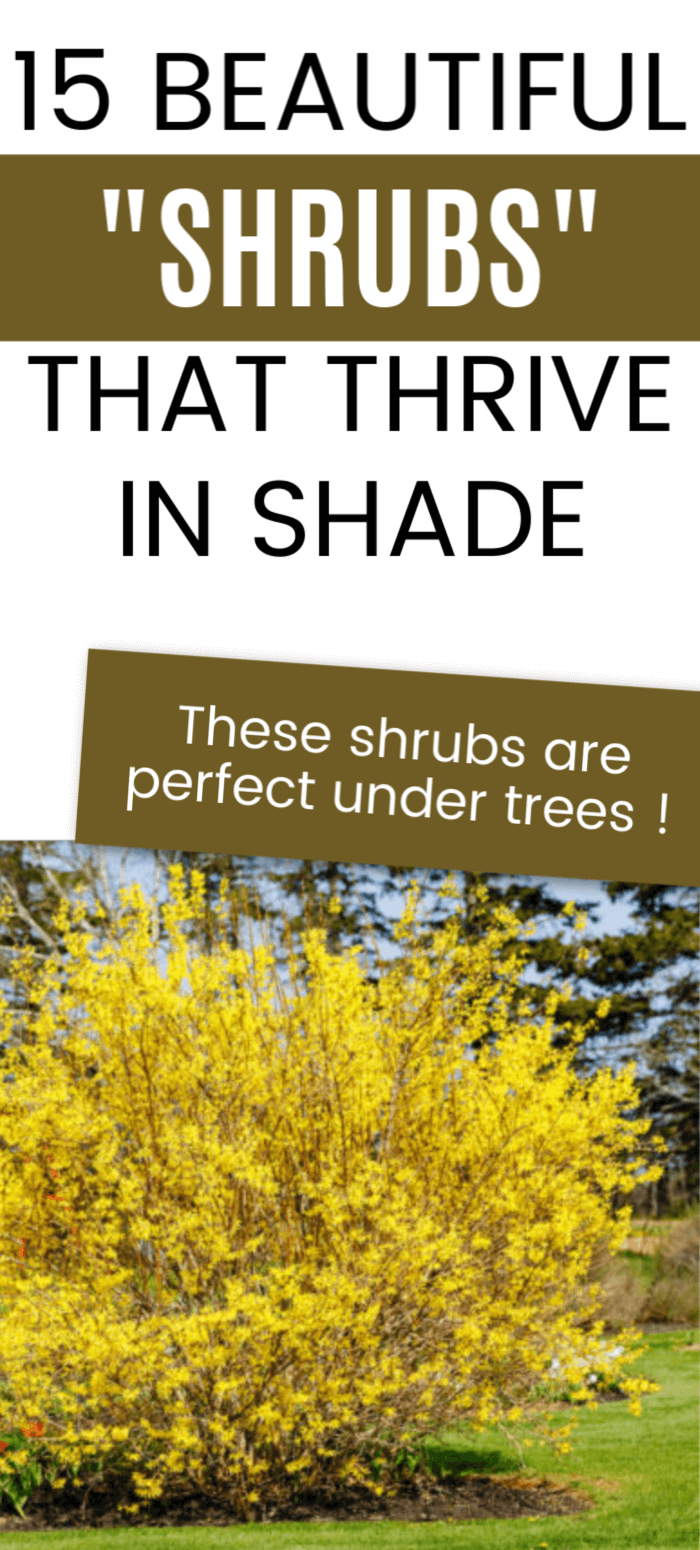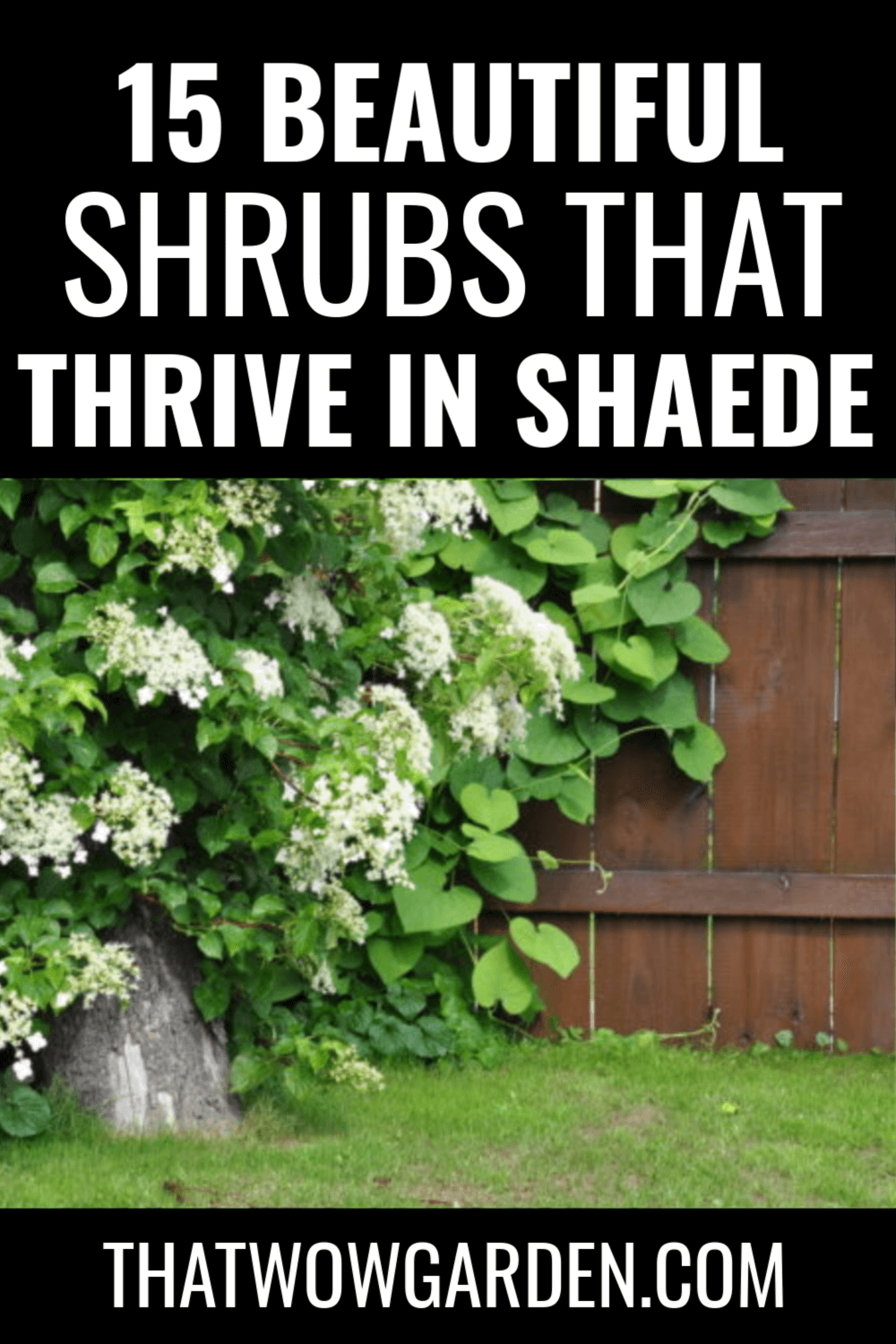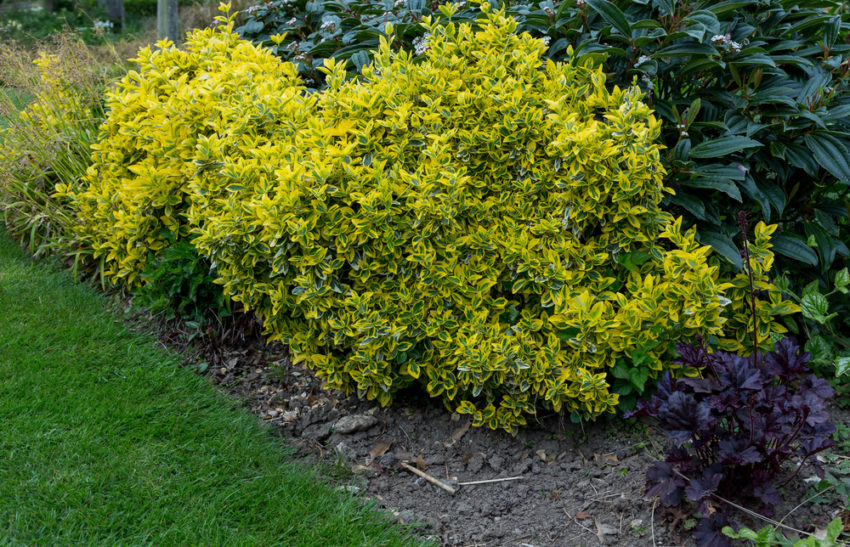As a connoisseur of gardening, I very well know the careful planning that goes behind devising a layout that is sustainable. Even though the sight of artful clumps of flowers and foliage may seem random, most landscape artists and nursery owners know this to be a lie. Of course, there is no denying that a garden may flourish even without care, but the difference diligence can make is considerable.
When it comes to a garden with big trees, there are a few varieties of shrubbery especially suited for plantation near them. Large trees (mango, oak, chestnut, ash) usually are spread over an area of a few meters at the foot and provide shade that can extend to a diameter of as much as 15 meters. This might not be an ideal environment for plants that require prolonged exposure to sunlight in order to flourish. But for the more delicate plants, the ones that grow and bloom away from direct light, the soil in the shade of a tree is possibly the best environment for them to spring from.
The following list contains 15 varieties of shade-loving shrubs, specially curated for those who are on the lookout for saplings that will flourish under the plentiful shade of large trees.
1. Japanese Rose
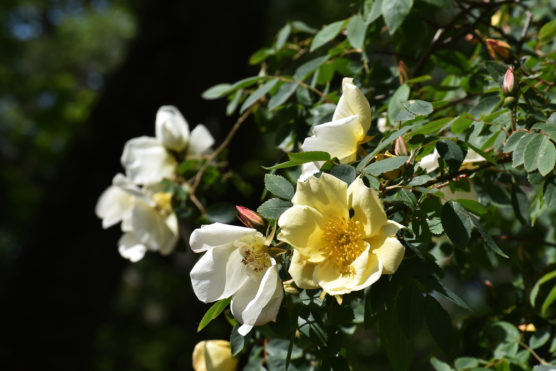
A deciduous plant with a definite hankering for shade, this flower-bearing plant has sprung as its blooming season. Spring, however, is not the only season the plant is restricted to- it blooms multiple times throughout the year. As long as there is a guarantee of partial shade.
This particular plant demands a fair amount of upkeep, especially in regard to pruning. Overgrowth hinders the plant’s capacity to bloom, and thus must be avoided. Cutting the plants very short has often proved to stimulate growth instead of stunting it.
Japanese roses are commonly found in a particularly vibrant shade of yellow and are best suited for plantation in a loamy soil.
2. Hydrangea(climbing)
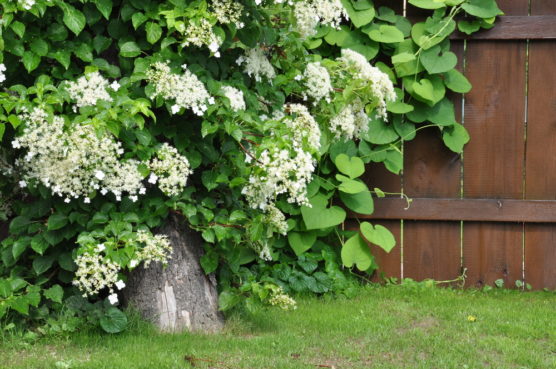
The climbing hydrangea is essentially a vine, and oddly apt to the topic at hand owing to the proclivity of vines twisting in and out of the sun.
The really good trait this plant displays is tolerance to both light and shade. While some gardeners claim that the actual flowers bloom more noticeably when exposed to sunlight, some others stubbornly stick to their claim that shade is what nurtures the plant. And although these plants grow naturally as vines, they can be trimmed to pose as shrubs. The trimming also stimulates development.
These flowers are commonly found in shades of pink, purple, and white and grow in moist acidic soil.
3. Emerald and Gold Euonymus
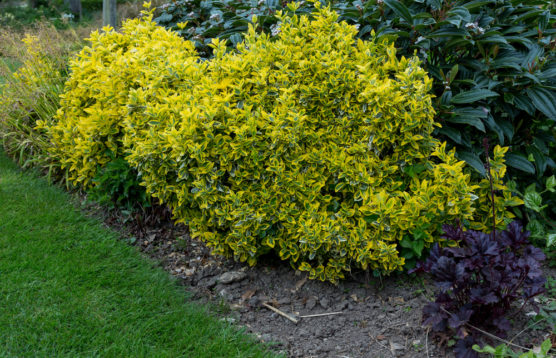
This is a leafy shrub that produces yellow and green leaves, hence the name. This plant shows interesting variations in color depending on its exposure to the sun- more sunlight causes more yellow in the leaves, a sort of burnished gold color while the plant in shade makes the leaves appear darker and very green.
It is a fast-growing plant and requires regular pruning. And even though sunlight might have a lot to do with the color schema of this vibrant bush, it barely affects the performance. Euonymus grows equally well in the sun and in the shade.
Euonymus requires moist soil for optimum growth but should be steered clear from areas that are likely to witness flooding.
4. Sky Pencil Holly
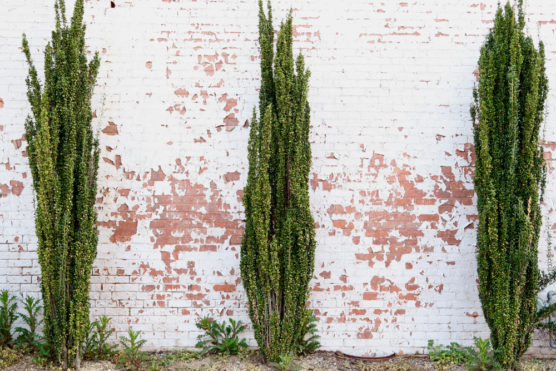
A personal favorite, sky pencil hollies are akin to architectural installments- with their signature columnar shape.
It can grow to be quite tall, up to three to four feet high but also is accustomed to growing in corner lots and small spaces. The leaves tend to be small and smooth-edged, and they grow in a general upward manner which is one of the many space-saving techniques the plant employs when called upon to do so.
Upkeep is minimal, with trimming advisable during the winter months. Sky pencil hollies have a curious greenish-white tinge and grow well in acidic soil conditions.
5. Yew
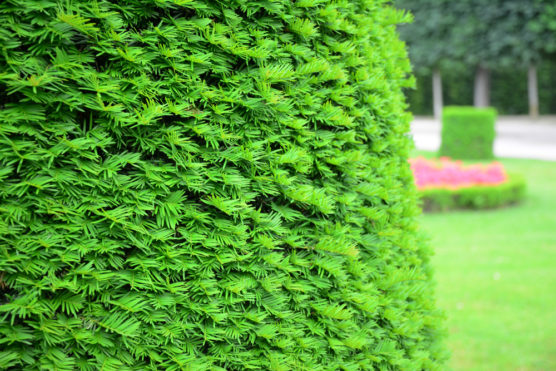
Popularly recognized for their distinctive red berries and a long-standing relation to Christmas, yews thrive in shade. These are resilient plants, and can tough out almost any weather condition given they have planted in well-drained soil.
Yews should be pruned in early summer.
Pro Tip: Yew berries are poisonous and should be under no circumstances be ingested.
6. Serviceberry
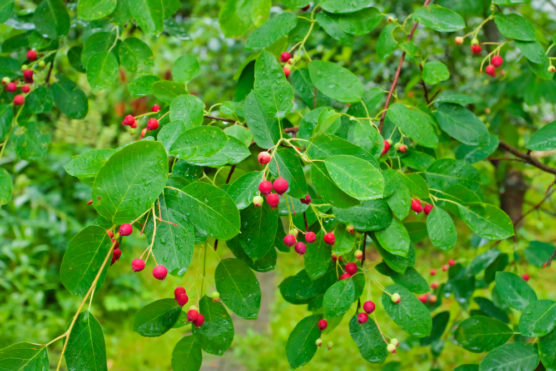
Serviceberry, especially the alder-leaved serviceberry is a plant that produces both flowers and fruits. This variety is a member of the Rosaceae family.
The flowers bloom in springtime. They are typically a shade of off-white. Additionally, the plant also produces purplish fruits at the time. Serviceberry is a shrub for all seasons- they exhibit beautiful fall colors and a striking shade of bark in the winter months. Deciduous by type, they are known to grow in regions in the Northern Hemisphere.
Serviceberries have certain vulnerabilities- they can sometimes be prey to rust and mildew fungus. Good ventilation acts as an antidote in these situations.
7. Rhododendrons
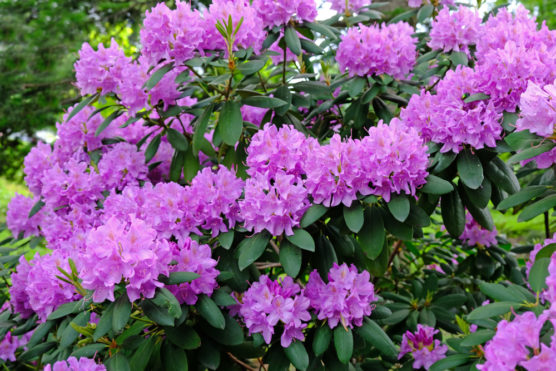
If you are a lover of the classics and want a view of blood-red rhododendrons as Rebecca did from the window in her morning room, look no further. Rhododendrons do not just grow as red flowers- they are also found in shades of pink, yellow, purple, and white.
They have quite a distinct appearance and a commanding presence that sets them apart. They are suited for growth in different kinds of climate, owing to their availability as both deciduous and evergreen types.
They need acidic soil for optimum growth. In the absence of naturally occurring acidic soil, an acid-based fertilization regime is imperative.
8. Camellia
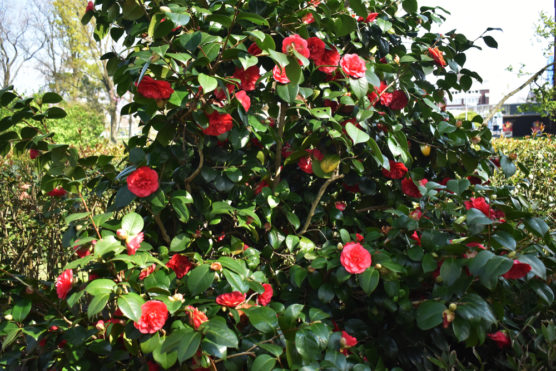
A plant known for both its distinctive scent and taste (in the case of camellia leaf infused teas), a camellia bush is ideally suited for plantation under the shade of a tree.
It also serves excellently the purpose of ornamentation- the flowers are beautiful, the foliage is glossy and these plants bring with them a promise of durability. Maintenance is also relatively easy, with pruning almost an afterthought.
Camellia grows best in sandy, acidic soil.
9. Common Boxwood
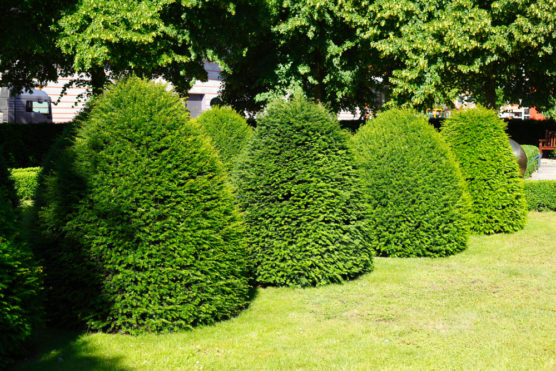
An evergreen shrub that is a fixture in sprawling gardens and topiaries, boxwood is a plant known to grow in a compact cubical structure. The leaves are dense and dark green, they grow in clusters around each other.
Boxwood holds up well in both sun and shade, although arguably it might prefer the latter. They can grow up to approximately three feet but can be trimmed and kept at a lower height.
Boxwood is a slow grower, which translates into there being ample time for pruning.
10. Witch Hazel
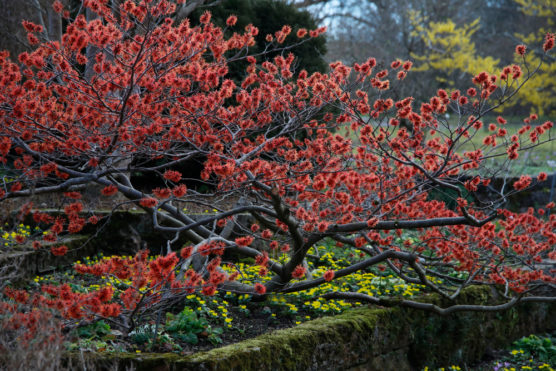
Certainly, a good idea if you are looking to stock witch hazel’s many astringent benefits in your own garden, this shrub also puts up a striking display during the fall.
It blooms with its trademark flowers (very fragrant), in early spring. These flowers are yellow, with the leaves turning the same color during the passage of succeeding summer. Witch hazel has a signature vase structure and can grow up to be as tall as a small tree if not kept in check.
Pro Tip: Compost is required to boost optimum growth.
11. Peony (Tree peonies)
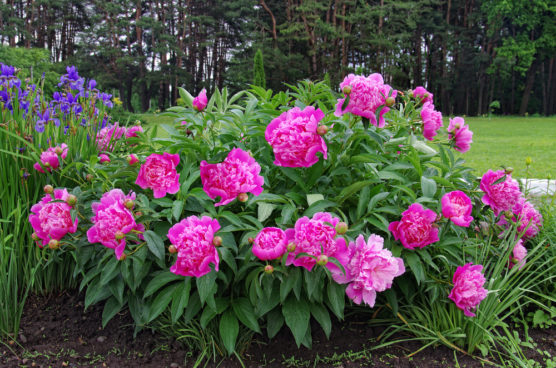
Tree peonies are flowering shrubs that bloom in late spring. The flowers are big beautiful, and are commonly found in shades of pink and purple. There are some other varieties in red and white, but these are rarer.
Peonies make for excellent additions to herbaceous borders- primarily because of the vividly colorful flowers, but also because their leaves are exceptionally beautiful. They are smooth and dark green in color.
Peonies are easily cultivated in loamy soil and react well to both the sun and the shade. They need sparse watering and can rot if over watered.
12. Bottlebrush Buckeye

Bottlebrush buckeye grows in colonies- spikes of white flowers that twist upward in towers. They are particularly active during the summer months, thriving in shade from the direct sun while also reaping benefits from the warm weather.
These flowers are certainly striking and are known to attract a host of pollinators. The leaves generally droop slightly and are a pleasant shade of green. These colonies spread and expand with the help of ‘suckers’, which ought to be removed if further expansion is desired. The suckers help keep the shrub within bounds.
13. Forsythia
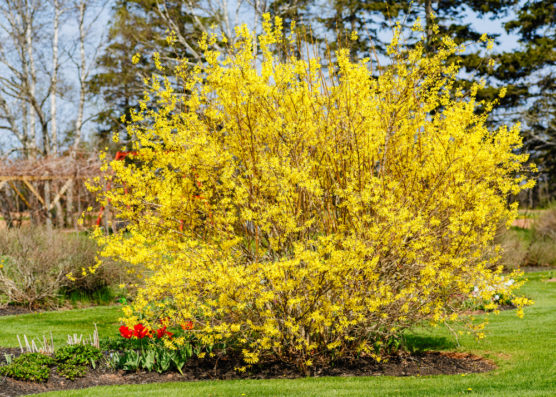
Part of the olive family, forsythia is a beautiful shade shrub. They are native to eastern Asia, and are rapid growers. Characterized by bright yellow flowers and dry capsule-like fruits, this plant grows in the summer months while late winter is the usual flowering period.
Deciduous by type, the leaves are distinctively serrated which is a prime identifying trait of this variety. Upkeep includes regular watering, but it advisable to avoid overwatering.
14. Inkberry

Also known as winterberry, inkberry is a plant cultivated and grown primarily for ornamental purposes. They perform best in partial shade, but can delve into deeper realms (deep shade!) as well.
Inkberry is a slow bloomer, with the maximum height they can reach being just under eight feet. They grow best during summer and autumnal months, producing during the time both fruits and flowers. The fruits in question are small and blackberries, while the flowers are white and wispy.
Inkberry is most closely associated with the luscious foliage it is known for- it is an evergreen. The leaves are broad and smooth-edged, dark green which might turn to a purplish hue in winter. Moist soil is a prerequisite, in addition to regular and plentiful watering.
15. Japanese Andromeda
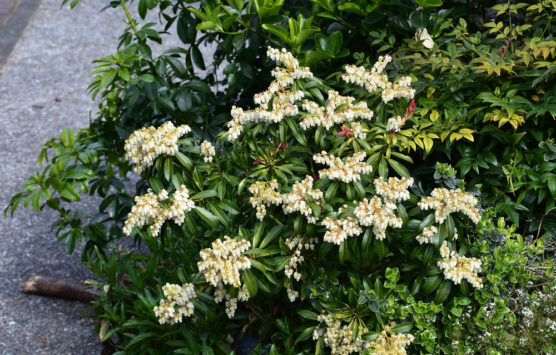
Native to Japan and eastern Asia, this shade-loving shrub is widely grown in home gardens and conservatories. They have very beautiful flowers- white and delicate, with red buds- that is quite the hit in flower shows. Typically easy to grow and care for, these shrubs have a flowering period during springtime and a relatively slow rate of growth.
It is an evergreen plant, with glossy and green leaves that are slightly serrated. New leaves tend to have a reddish tinge.
There are, of course, many more options to choose from. Any shrub or plant that can thrive without six hours of direct sunlight every day is technically a shade shrub, although there are quite a few classifications within this category.
Your choice must depend on the surroundings, the climate, the soil type, and the landscape requirements. Making an informed decision is important both in terms of the actual plant and its aesthetic.

